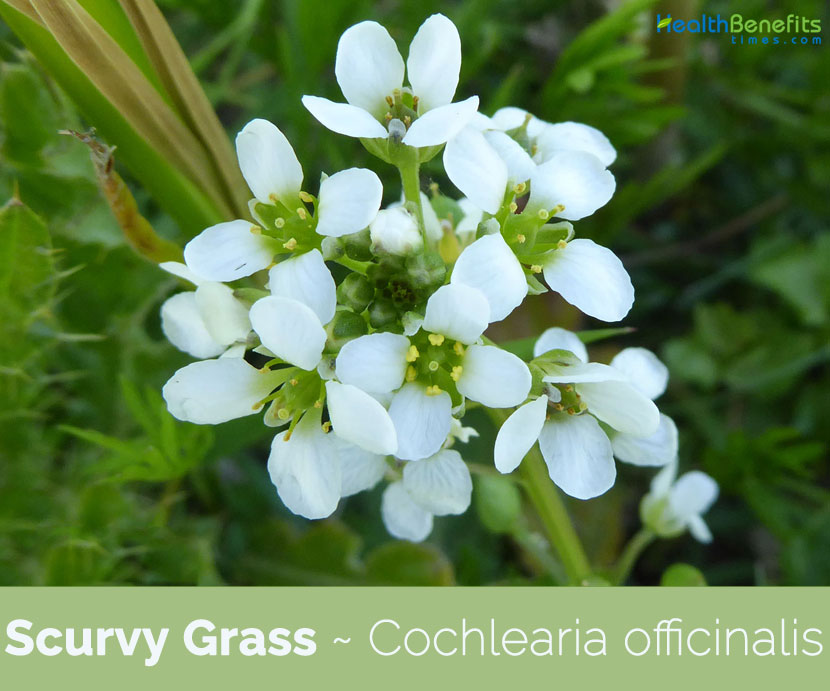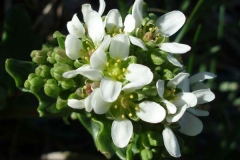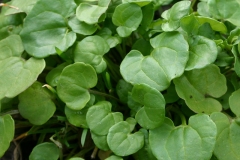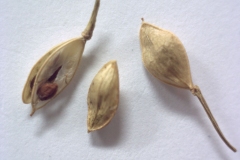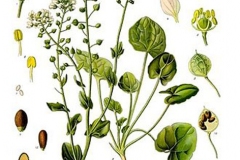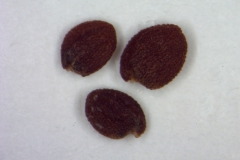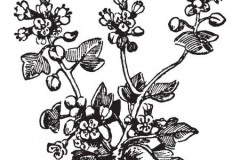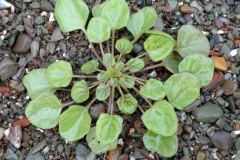| Scurvy Grass Quick Facts | |
|---|---|
| Name: | Scurvy Grass |
| Scientific Name: | Cochlearia officinalis |
| Origin | Europe and temperate regions of Asia and North America |
| Shapes | Small almost globose pod containing small reddish brown seeds |
| Taste | Warm acrid bitter taste |
| Health benefits | Beneficial for scurvy, ulcers, nosebleed, bleeding wounds, dropsy, kidney stones, pimples, spots, spongy gums and canker sores |
| Name | Scurvy Grass |
|---|---|
| Scientific Name | Cochlearia officinalis |
| Native | Europe and temperate regions of Asia and North America |
| Common Names | Common scurvy-grass, Scurvy-grass, Spoonwort, Common scurvy grass, Scurvey grass, scorbute grass, scurvy weed |
| Name in Other Languages | Arabic: تودري Bulgarian: Kohlearia Catalan: Cocleària, Cocleària menor, Culleretes d’aigua, Herba de l’escorbut, Herba de les culleres, cocleària alpina Czech: Lži, lžičník lékařský Danish: Foder-spergel, Konellike, Vellugtende gåsefod, Læge-Kokleare, Lægekokleare Dutch: Engels lepelblad en echt lepelblad, Echt lepelblad, Echt en Engels lepelblad, gewoon lepelblad, gewoon lepelkruid English: Common scurvy-grass, Scurvy-grass, Spoonwort, Common scurvygrass, Scurvey grass, scorbute grass, scurvy weed Esperanto: Skorbutherbo Finnish: Rohtokuirimo, ruijankuirimo French: Cranson, Herbe aux cuillère, Cochléaire Officinale, Cranson Officinal, Herbe aux Cuillères, Cranson, Cochléaria, cochléaria officinal, cranson officinal, German: Echtes Löffelkraut, Löffelkraut, Löffelblättchen, Löffelkresse, Skorbutkraut Hungarian: Orvosi kanáltorma Icelandic: Skarfakál Irish: Biolar tra, biorphiobar Italian: Coclearia medicinale, Rafano, cren, barbaforte, erba cocchiara, North Frisian: Greens saloot, skorbükskrüüs Norwegian: Finmarke-kaal, Cochleare, Skiørbugs-græs, Stort-ericsgræs, Skjørbuksurt Polish: Warzucha Lekarska, Warzucha Portuguese: Cocleária, Cocleária-maior, Erva-das-colheres, armorácia Russian: krupka lozhechnytsevydnaya (крупка ложечницевидная), lozhechnitsa al’piyskaya (ложечница альпийская), lozhechnitsa aptechnaya (ложечница аптечная), lozhechnitsa atlanticheskaya (ложечница атлантическая), lozhechnitsa dushistaya (ложечница душистая), lozhechnitsa kamchatskaya (ложечница камчатская), lozhechnitsa kruglolistnaya (ложечница круглолистная), lozhechnitsa lekarstvennaya (ложечница лекарственная), lozhechnitsa Linneya (ложечница Линнея), lozhechnitsa obyknovennaya (ложечница обыкновенная), tsingotnaya trava (цинготная трава), evtrema Rossi (эвтрема Росси) Scottish Gaelic: Biolar trá Serbian: Kašikara (Кашикара) Shambala: Kašikara Slovak: lžičník lékařský Spanish: Cucharita, Coclearia, Hierba de Cucharas, hierba de las cucharas Swedish: Citronmålla, Foderspärgel, Silvermålla, Vårtsärv, Rohtokuirimo, Skörbjuggsört, Åkernejlika, Vanlig Skörbjuggsört, skörbjuggsört Turkish: Kaşık out Ukrainian: Lozhechnytsya likarsʹka (Ложечниця лікарська) Upper Sorbian: Lěkarski chrěn Welsh: Llwylys cyffredin Sr Ec: Kašikara (Кашикара) Sr EI: Kašikara |
| Plant Growth Habit | Small, low-growing, very variable annual or perennial plant |
| Growing Climates | Sea cliffs, coastal marshes, salt mines, saline springs, saltmarshes, coastal cliffs, walls, rocky, muddy seashores, gravel beaches, crevices in beach cliffs, grassy cliffs, coastal roadside lanes, mountain rock ledges and gullies |
| Soil | Preference for sandy or light, loamy or medium and clay (heavy) soils that have an adequate drainage. In addition, this plant has a preference for basic (alkaline), acidic and neutral soils. It also has the aptitude to grow in saline soils. |
| Plant Size | 10–50 cm (3.9–19.7 in) tall |
| Stem | Stems are hairless and long stalked with fleshy leaves |
| Leaf | Radical leaves are heart or kidney-shaped, fleshy, succulent, and stand upon long footstalks; the stem-leaves alternate, rhomboidal, blunt, and dentated on each side |
| Flowering season | May to August |
| Flower | Flowers are cruciform, and stand upon short peduncles, terminating the branches in thick clusters. The calyx consists of four leafits, which are oval, blunt, concave, gaping, deciduous, and whitish at the margin |
| Fruit Shape & Size | Small almost globose pod containing small round seeds are reddish brown |
| Propagation | By Seed |
| Flavor/Smell | Unpleasant smell |
| Taste | Warm acrid bitter taste |
| Plant Parts Used | Leaves, aerial parts |
| Seed | Small, round seeds are reddish brown |
| Season | July to September |
Plant Description
Scurvy Grass is a small, low-growing, very variable annual or perennial plant that normally grows about 10–50 cm (3.9–19.7 in) tall. The plant is found growing in sea cliffs, coastal marshes, salt mines, saline springs, salt marshes, coastal cliffs, walls, rocky, muddy seashores, and gravel beaches, crevices in beach cliffs, grassy cliffs, coastal roadside lanes, mountain rock ledges and gullies. The plant has a preference for sandy or light, loamy or medium and clay (heavy) soils that have an adequate drainage. Additionally, this plant has a preference for basic (alkaline), acidic and neutral soils. It also has the ability to grow in saline soils. Stems are hairless and long stalked with fleshy leaves.
Leaves
Radical leaves are heart or kidney-shaped, fleshy, succulent, and stand upon long footstalks. The stem-leaves are alternate, rhomboidal, blunt, and dentated on each side. Top the leaves are sessile, or embracing the stem, but towards the bottom they are frequently upon short broad footstalks.
Flowers
Flowers are cruciform, and stand upon short peduncles, terminating the branches in thick clusters. The calyx consists of four leafits, which are oval, blunt, concave, gaping, deciduous, and whitish at the margin. Petals are four, white, oval, spreading, and twice the length of the calyx. Filaments are six, four long and two short, greenish, tapering, and crowned with yellow anthers; it has no style. Flowering normally takes place from May to August. The flowers are hermaphrodite and are pollinated by bees, flies, and beetles. It is also noted for attracting wildlife and not being frost tender.
Fruits
Fertile flowers are followed by small almost globose pod containing small round seeds are reddish brown. The seeds ripen from July to September. It has an unpleasant smell and a bitter, warm, acrid taste, very pungent when fresh.
History & Folklore
As the common name suggests, this plant has long been used for its high vitamin C content. It was used by sailors and others to prevent the onset of scurvy, a potentially fatal vitamin C deficiency marked by bleeding of the gums. The 17th century English physician Robert Turner recommended scurvy grass taken in ale as a remedy for a range of conditions, including “ague.” Prior to the discovery of vitamins, the effectiveness of the plant in preventing scurvy was credited to its volatile oil.
https://www.youtube.com/watch?v=t0ZrKAJnHEQ
Traditional uses and benefits of Scurvy Grass
- The herb is antiscorbutic, aperient, disinfectant, diuretic and stimulant.
- This plant was highly valued by sailors of the past and was taken in the diet daily as a preventative for scurvy on long sea trips.
- It is best used when fresh though it can also be harvested in late spring or early summer and dried for later use.
- It was once used as herbalists as a cure for scurvy, as the plant consists of Vitamin C.
- Essential oil is beneficial in paralytic and rheumatic cases; scurvy-grass ale was a popular tonic drink.
- Scurvy grass is astringent and may be applied to lessen or stop a nosebleed or other types of bleeding wounds.
- It is also known to be an effective diuretic and is recommended by herbalists for treating health conditions like dropsy and kidney stones.
- Use of the juice extracted from the leaves of scurvy grass helps in cleaning up blotches on the skin.
- Common scurvy grass possesses diuretic attributes and is helpful in treating any type of health condition wherein malnutrition is an issue.
- Juice extracted from the leaves of the common scurvy grass may be used as an antiseptic mouthwash to treat canker sores.
- Juice can also be applied topically on the skin to treat pimples as well as spots.
- Applied externally, the crushed leaves of the plant are applied topically to cure ulcers.
- In the present times, herbalists recommend the topical application of the common scurvy grass leaves to treat ulcers and wounds that heal very sluggishly.
- The juice, when diluted with water, makes a good mouth-wash for spongy gums.
- It can be used in the form of a juice as an antiseptic mouthwash for canker sores, and can also be applied externally to spots and pimples.
Culinary Uses
- Leaves can be consumed raw.
- An acrid tarry flavor, it can be added in small quantities to salads for its high content of vitamin C.
Precautions
- The plant also has the potential to cause skin irritation when it is applied straight away on the skin.
- When this herb is taken orally in large amounts it may result in stomach and intestinal pain.
- They should not use this herb during pregnancy or while breast feeding.
References:
https://www.itis.gov/servlet/SingleRpt/SingleRpt?search_topic=TSN&search_value=22816#null
https://pfaf.org/user/Plant.aspx?LatinName=Cochlearia+officinalis
https://www.cabi.org/isc/datasheet/113397
http://www.floracatalana.net/cochlearia-officinalis-l-subsp-pyrenaica-dc-rouy-et-fouc
https://plants.usda.gov/core/profile?symbol=COOF4
https://en.wikipedia.org/wiki/Cochlearia_officinalis
https://npgsweb.ars-grin.gov/gringlobal/taxonomydetail.aspx?id=11010
http://www.theplantlist.org/tpl/record/kew-2729901
https://www.botanical.com/botanical/mgmh/s/scurvy35.html
https://gd.eppo.int/taxon/CCLOF


